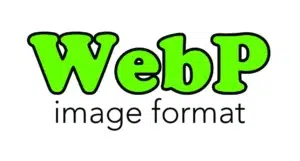Introduction
In our digital world, it’s no surprise that there are a lot of image formats out there. But if you’re like me and don’t know much about them, then this article should help! In this post, we’ll cover the basics of WebP and why it has become so popular for web developers.

What Is WebP?
WebP is a file format developed by Google that aims to replace JPEG and PNG. It’s designed to be a newer, lossless image format that can reduce the file size of images by up to 70%. You can use WebP as a replacement for your current image formats and it will be faster and smaller than before!
The Need for WebP
WebP, it’s a newer image format that provides lossy and lossless compression for images. WebP is supported by Chrome, Opera, Android, and some other platforms.
When images are loaded on your website they take up space from your server which costs money.
WebP images are smaller than JPEGs and PNGs so they save bandwidth when loading them onto a page.
Chrome adding support for WebP image format with Google’s announcement.
Google‘s recent announcement that Chrome would be adding support for the WebP image format. This will likely increase the importance of using this image format in the future.
This isn’t just about Google, though. There are plenty of other companies and people who are working hard to make sure that you can take advantage of WebP images online. Facebook is one of them. They’ve already implemented it on their website and are encouraging others to do so as well. If a picture is worth 1000 words then this might be worth some serious consideration!
Importance to web designers
There are a number of benefits to using WebP images when building websites:
- Load my sites faster. Using WebP images instead of PNG files or JPEGs means that I’m not loading as many files. This makes my site load faster. It also means that it takes up less space on the user’s device, which is good for SEO.
- Save storage space and bandwidth. By using smaller file sizes, I can reduce how much storage space is needed and how much bandwidth it takes to load your content—which saves money!
You can create WebP images, and convert existing PNG or JPG files to WebPs.
Another way to create WebP images is with graphics software. If you already have a workflow for creating PNG or JPG images, it’s easy to add WebP into the mix.
Converting your existing images can be done in these ways
- Use a web-based converter: Many online tools, such as CloudConvert and Online-Convert, allow you to upload an image and convert it to WebP format.
- Desktop converter: There are several desktop applications, such as XnConvert, GIMP, and IrfanView, that can convert images to WebP format.
- Via Command-line tool: The WebP command-line tool, which is a part of the WebP package, enables you to convert images to and from WebP format using the command line. You can install the WebP package on Windows, Mac, or Linux using your package manager (e.g., apt-get, yum, etc.) or by downloading it from the WebP project page.
- Use a programming language: You can use a programming language to convert images to WebP format. The WebP library provides APIs for various programming languages that you can use for this purpose.
- Use a browser extension: Some web browsers offer extensions that allow you to convert images to WebP format directly from the browser.
- Use a CMS or e-commerce platform: Many content management systems (CMS) and e-commerce platforms, such as WordPress and Shopify, have built-in support for converting images to WebP format. You can typically activate this feature in the platform’s settings or by installing a plugin or extension.
How to add WebP images to your WordPress website
You can use WebP images in WordPress by simply replacing the image file extension of your current image with “.webp”. Then, you will be able to upload it to your media library and insert it into a post or page via the visual editor.
It’s not recommended that you upload large files—like videos—as WebP as they might take up too much space on your site. Most browsers do not support this type of format by default. Users may have trouble viewing them depending on their browser settings. You can change these settings if you want.
Adding WebP images to a WordPress site Manually
To manually add WebP images to WordPress, follow these steps:
- Add the image to your media library by uploading it or dragging and dropping it on top of the upload button in the content management system editor.
- Go to the media library, find your image and click on it. This will open up a window with all of the settings associated with that file. Just Make sure you’re in “edit mode”!
- Click on “Set Featured Image” at the bottom left-hand corner of this window, which will bring up another window where you can select what kind of image you want as your featured one—a thumbnail version from a full-size version, for example—and then click “Update Details” below that button when finished choosing which one fits best for this particular situation being discussed here today about WebP vs JPEG formats? How does this relate back again? Well, firstly let’s take a look at how important quality really matters in some cases…
Conclusion
Google developed WebP as a newer image format that can compress images and make them smaller and faster to load on websites. WebP is essential for users who want fast-loading pages and websites that look great without consuming too much bandwidth from their provider.
Additionally, you can use WebP with Android or iOS apps or games built with Unity3D. The file size savings offered by WebP will help ensure that your app loads quickly on any device running today’s networks.
Now that we know what WebP is, why is it important? And more importantly, how do you get started using it? You have to find out for yourself!





